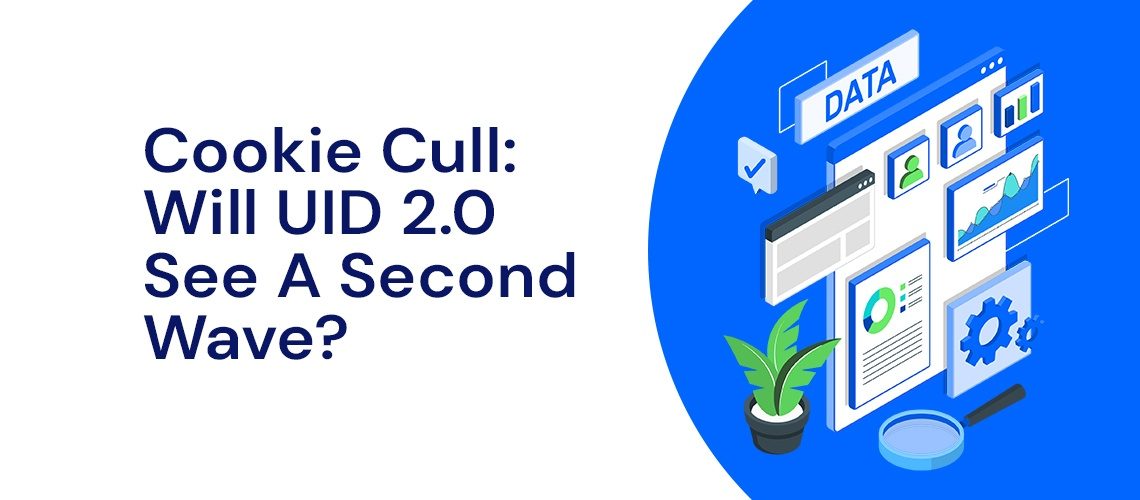While some in adtech and media may remain skeptical around Google’s hard deadline to cull third party cookies, the company is insistent there will be no further delays. “Cookies will be phased out completely at the end of 2024,” Dan Taylor, Google’s VP of Global Advertising said last month,
Either way, kicking the can down the road for the last few years has at least given the industry time to prepare alternatives.
Given the mounting pressure on data privacy regulation across major markets including the US, Europe, Canada, Australia, and others, that’s a smart move – at least for those that have actively sought solutions. And there are plenty out there vying for adoption.
Alt IDs: Second wave?

While Google is building its browser-based Topics alternative, the ad industry has launched a plethora of alternative identity solutions in a bid to keep the engines of digital advertising – targeting, retargeting, personalization, measurement, and attribution – firing on all cylinders.
Some adtech firms and publishers are aiming for more persistent identifiers than currently offered by Topics, which poses challenges for cross-device tracking, targeting, and measurement, with the topics of interest that Google pulls together based on user browsing only sticking around for three weeks.
Such solutions rely on probabilistic signals. These combine device, browser, IP addresses, and a bunch of other information and work by teaching algorithms to join the dots and work out who is the same person across different devices. It’s an easier way to build scaled alternative identity solutions to deterministic models, which largely rely on hashed emails. The problem is, they are not consented by individuals being tracked by their devices, and lawmakers around the world are moving to classify things like IP addresses and device IDs as personally identifiable information (PII).
Deterministic models – those hashed emails or phone numbers, for example – may also in the future face regulatory challenges depending on how privacy lawmakers in different countries and regions determine what constitutes PII and whether hashed emails could, in simple terms, be ‘unhashed’. Doing so via decryption would be difficult and time consuming, but not impossible. There are protections – salting and peppering – but not all adtech vendors take those precautions as standard.
Consent is king
Either way, the key for alternative ID solutions is consent. If people have given informed consent to use their email address or other PII for advertising and marketing purposes, and can withdraw that consent at any time, they are more likely to pass regulatory muster. But the key word is informed. That means explaining in very simple terms so that someone of average literacy can understand what will be done with their data.
The Trade Desk-led, IAB-backed open source UID2.0 solution takes that approach and since launch has achieved buy-in from a number of major publishers, SSPs, DSPs, data providers (including AlikeAudience), CDP, and Clean Room players and advertising holding groups, IPG, Publicis, and Omnicom. Users first opt-in via publisher sites, i.e. via log-ins, and can control their settings and opt-out at any time.
Google’s insistence that Cookies will be gone within a year may give the non-profit UID2.0 initiative another wave of sign-ups over the next twelve months – which it will ultimately need to achieve genuine scale and deliver high match rates.
Bigger measurement challenge

Alternative identifiers could help advertisers, publishers, and the ad supply chains survive the cookie cull in terms of targeted ads. But measurement across channels, AKA cross-media measurement, remains a major challenge – and it’s far from just a digital problem.
For example, advertisers have long struggled to understand de-duplicated reach between linear and BVOD or CTV channels. They can try to stitch TV audience data back from the likes of Nielsen and map it with data from YouTube. But it’s not easy, and not possible to do in one hit.
Meanwhile, BVOD and CTV publishers are facing increasing challenges around frequency capping, i.e. serving the same ad too often, wasting marketer budgets and annoying audiences. That’s because ads can be coming in via direct buys, programmatic guaranteed and to a lesser extent, the open exchanges. Which can mean they get played far more often to the same people than intended.
Because de-duplicating reach between channels such as Youtube, CTV or BVOD, and free to air linear TV is hard, it means that advertisers might be hitting the same person multiple times with the same ad – compounding the frequency capping problem.
But there are some interesting solutions emerging – and some can also help measure out of home ads, where programmatic adoption is accelerating, particularly in Europe, and likewise audio.
ACR and a panel renaissance?
Automated Content Recognition, or ACR, is widely used in smart TVs. The likes of LG, Roku, Samsung, and Vizio all offer ACR data, which via video fingerprinting literally recognises what’s been played on the screen, frame by frame. While some players – notably Vizio – in the past hit trouble over lack of consent, all the major players now seek consent to use ACR data for advertising purposes during the set-up stage.
But the data is only useful to advertisers within those highly profitable walled gardens – it doesn’t help with cross channel measurement across the piste.
While players like VideoAmp are making headway in the US by blending ACR and set-top box data to form a hybrid panel for TV and video measurement, audio-based solutions pioneered initially by the likes of Shazam, potentially offer broader cross-channel scope.
One start-up that is starting to gain some major traction – including with the likes of Google itself as well as Amazon, Unilever, and Virgin – is Netherlands-based Beatgrid. The firm, founded by a part-time DJ, has built a smart-phone based panel that pays people to let the company use their data. Data from the panel can then be extrapolated out.
It uses the phone app to actively listen for signals that can determine what content users are consuming (the inference is that the smartphone is in general on the person or nearby). By making inaudible pitch shifts in ads – altering the pitch of the audio very slightly for different channels – the system can work out whether that ad is playing on a mobile device, a TV, or even by specific channel, such as ads played on Youtube or on free to air TV, or BVOD.
Using location data it can also map footfall, e.g. people walking past billboards, but also, into stores. A recent trial in Australia for retailer Kmart via IPG’s Kinesso and UM suggests its measurement data lines up almost exactly with both the TV industry’s panel-based currency as well as that of YouTube via the DV360 DSP.
Which is an interesting development. As cookies wane and regulations tightens, paying people for their data and using single source panels – derided as a legacy technology when cookie-powered programmatic advertising took off – could end up being a significant part of the post-privacy solution.


